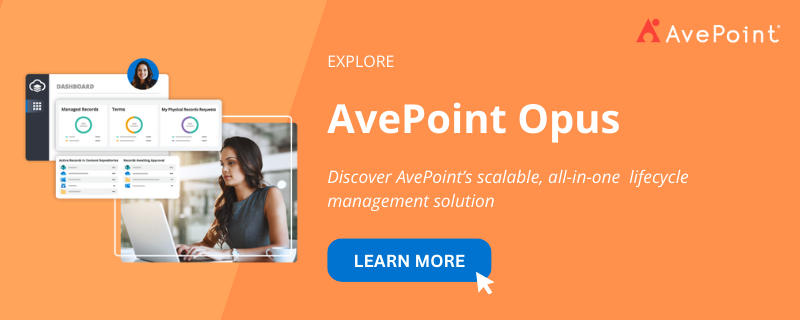Breaking Records: Information Management Lessons from the Olympics

The 2020 Tokyo Olympics is one of the most remarkable and record-breaking Games of all time. It is officially the highest-quality major event in athletics history, with three world records, 12 Olympic records, and dozens of national records.
However, history could not be made without data on never-before-done acts. Like athletes, organizations must examine past performances to drive continuous improvement and breakthrough innovations. They must practice effective information lifecycle management to reach the next level of excellence.
With the 2024 Paris Olympics – and potentially new records – on the horizon, let’s look at some of the top record-breaking events of the Tokyo Olympics and explore parallel best practices in information management.
Swimming to Gold: 1-Year-Old Data
In swimming, American Caeleb Dressel staked his claim in Olympic history as only the fifth swimmer to win five golds at a single Games. He set a new world record in the individual 100-meter butterfly, breaking his own world record set just a year ago at the 2019 World Championships.
A year-old data is likely in active storage to ensure accessibility, but information needs to be classified correctly by age, gender, activity levels, and other criteria.
Data classification is essential for streamlining processes and enabling organizations to manage large volumes of incoming data efficiently. Classifications should also be flexible and customizable, determining where data should be stored, who should have access to it, and what security measures should be implemented.
Raising the Bar: 5-Year-Old Data
American Sydney McLaughlin broke the 400-meter hurdles world record, shaving nearly a half-second off her own world record from U.S. Olympic trials and dethroning defending title-winner Dalilah Muhammad as Olympic champion at the 2016 Rio de Janeiro Games.
In the digital workspace, data that is around five years old may be on the brink of disposal, depending on the organization’s retention policies. Specifying retention periods for different information types ensures that crucial information is preserved for legal, regulatory, or operational purposes while identifying data that can be safely archived or retired to lower-cost storage solutions.
Custom data retention policies that recognize unique situations like “world record” or (in business) “compliance documents” are important. This is where robust information management solutions enable tailored retention policies that meet your strategic needs and guidelines.

Jumping to be a Hero: 26-Year-Old Data
In the women’s triple jump, Yulimar Rojas smashed a world record that had gone uncontested for more than 26 years set by Ukraine’s Inessa Kravets in 1995. Rojas’ achievements, including world titles in 2017 and 2019, have made her a national hero in Venezuela.
When an Olympic record is made, performance scores from that historic event become highly relevant and valuable for review. Information related to high-impact events needs to be retained with full context for actionable insights and decision-making.
Of course, not all information should remain in active storage indefinitely. Organizations should take direct action to archive and delete redundant, obsolete, and trivial (ROT) content, freeing up valuable storage space, reducing costs, and minimizing legal and privacy risks.
In cases where you need to keep data for extraordinarily long period, implementing an archiving solution is key. This allows you to move infrequently accessed yet vital data to more cost-effective storage while still maintaining access with permissions and metadata when needed.
Proper Data Management for Records Made to Be Broken
The inspiring displays of human accomplishment we witnessed in the Tokyo Olympics remind us that records are continually made to be broken. These historic achievements were not flukes — they were the result of intense preparation, strategic analysis of past performances, and continuous improvement fueled by comprehensive data.
The Olympic torch is now making its way to Paris — are they prepared to prove record-breaking feats?
On the business side, organizations must adopt the same care athletes give to their records. To truly maximize the strategic value of data, organizations must implement data management policies and solutions that ensure information is properly classified when actively in use, retained for appropriate periods when not, and efficiently archived when needed.
To illustrate the value of a comprehensive information lifecycle management approach, AvePoint Opus combines this cutting-edge AI technology with mature and field-tested storage optimization and information lifecycle technology to optimize data storage, minimize risks, and build a more robust data strategy.
For more information on how AvePoint Opus can help your organization manage its data more efficiently and effectively, visit our website.

Amabel Palencia is a content specialist at AvePoint, covering information lifecycle management and artificial intelligence (AI). A journalism graduate, she has 15+ years of experience in project management, customer engagement, communications, and content marketing strategy for B2B campaigns.



